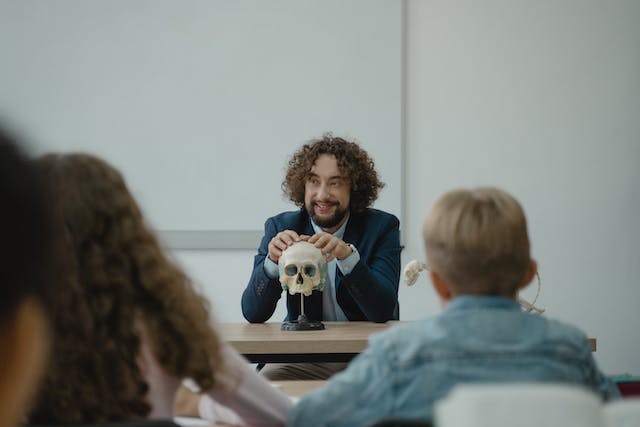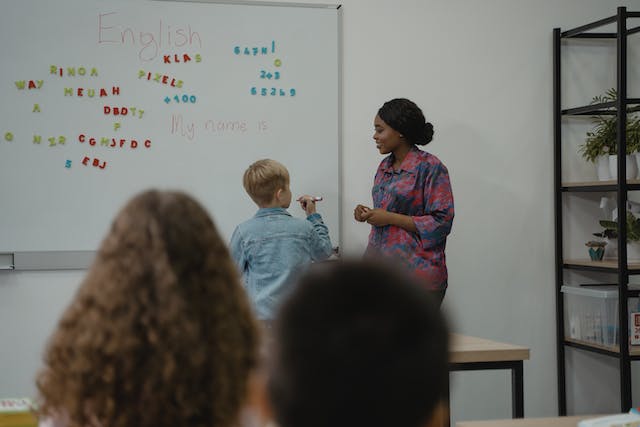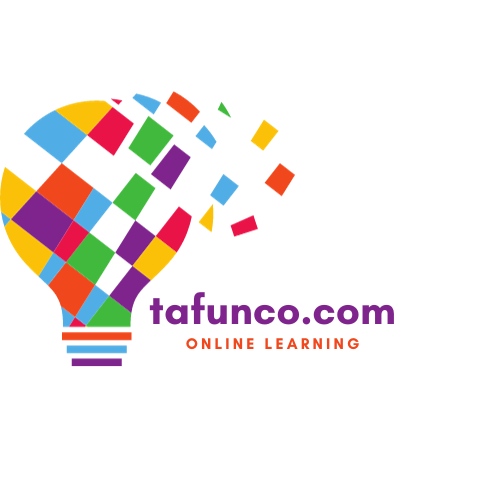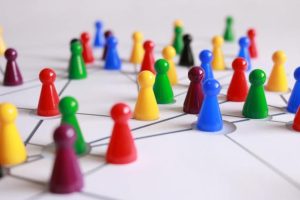Rapid technological breakthroughs are driving a dramatic transformation in the educational environment. The requirements of a generation reared in an innovative environment are being answered by the evolution of classic teaching approaches in the digital age. Emerging as catalysts for reinventing education, raising student involvement, and equipping students for the challenges of the future are innovative teaching approaches.

Interactive Educational Resources
The manner that students access and engage with instructional information is being revolutionized by digital platforms. Online forums and learning management systems (LMS) provide students a dynamic environment in which they may interact with multimedia content, take part in online chats, and turn in assignments without difficulty. Personalized learning experiences are made possible by these platforms, which let students go at their own speed and go over material again as required.
Augmented and Virtual Reality
Students may now experience immersive learning settings thanks to the advancements in virtual and augmented reality technology, which are dismantling the boundaries of conventional classrooms. These technologies improve experience learning, whether it is via the exploration of historical sites, the dissection of virtual species, or the simulation of intricate scientific procedures. Students may interact and get a greater grasp of topics via the use of VR and AR, which helps with information retention.
Model of a Flipped Classroom

By transferring direct instruction outside of the classroom via recorded lectures or reading assignments, the flipped classroom paradigm upends the conventional method of teaching and learning. After that, class time is devoted to group projects, conversation, and problem-solving. This approach encourages critical thinking and independent investigation while fostering a student-centered learning environment and active engagement.
Learning via Gamification
Gamification uses aspects of game design to increase the fun and engagement of learning. Through the use of educational games and simulations, students are encouraged to actively participate in the learning process and engage in friendly competition. Students may improve their tenacity, collaboration, and problem-solving abilities in a nurturing learning environment by using gamified material.
Adaptive Education Frameworks
Adaptive learning systems customize educational material to meet the requirements of each unique learner by using artificial intelligence and data analytics. Through an analysis of a student’s skills, limitations, and progress, these systems provide customized learning paths. This makes sure that every student is given material that is suitable for their level of difficulty, which promotes a more effective and efficient learning environment.
Online Tools for Collaboration
In the digital era, teamwork is essential, and there are many of online resources available to support group learning. Students may collaborate virtually thanks to project management software, collaborative documents, and video conferencing. Along with preparing students for a transnational workforce, these resources foster innovation and cross-disciplinary cooperation.
Artificial Intelligence Incorporated
The use of artificial intelligence (AI) in education is becoming more and more important. Chatbots, grading apps, and tutors with AI capabilities automate repetitive work so teachers may concentrate on more difficult aspects of instruction. To further enhance a more customized learning experience, AI may also provide unique feedback, spot learning gaps, and suggest specific resources.
PBL, or project-based learning
A educational strategy called “project-based learning” involves students in practical, real-world tasks. With this approach, students are encouraged to investigate difficult issues, carry out research, and work together to create answers. PBL encourages problem-solving, critical thinking, and the application of information in real-world contexts. Students who work on projects acquire critical abilities including communication, collaboration, and time management as well as a greater comprehension of the material.
Modules for Microlearning
Microlearning is the process of dividing instructional materials into manageable, concentrated chunks that may be quickly ingested. This methodology accommodates variable learning schedules and corresponds with the attention spans of the modern digital natives. Individual learning styles may be catered to via microlearning modules that provide bite-sized information in the form of videos, quizzes, and interactive components. This approach facilitates learning while on the road and improves information retention.
Incorporating Social Media
Students now spend a large portion of their life on social media, and teachers are using these platforms to further their education. Social media use in the classroom promotes interaction, teamwork, and idea exchange. Students may connect with classmates worldwide, exchange resources, and have meaningful discussions in online communities, discussion boards, and live broadcasts. This integration promotes a feeling of community and makes it easier for different viewpoints to be shared.
Making Decisions Based on Data
Teachers now have access to enormous volumes of data produced by online learning environments. By analyzing this data, important insights about student performance, learning trends, and potential problem areas are revealed. Through the use of data analytics, instructors may customize their pedagogical approaches to target certain student demands, guaranteeing a more customized and efficient educational encounter.
Assessment E-Portfolios
The whole range of a student’s talents is often not fully captured by traditional grading schemes. An answer may be found in e-portfolios, which let students display an assortment of their writings, including essays, projects, and thoughts. This all-encompassing method of evaluation offers a more complete picture of a student’s abilities and achievements. E-portfolios promote goal-setting and introspection in addition to showcasing academic accomplishments.

In summary
The educational environment is changing due to innovative teaching techniques that provide students with dynamic and interesting learning opportunities in the digital era. To educate students for the possibilities and difficulties of the future, educators must adopt these tools and strategies as technology continues to evolve. A paradigm shift towards a more individualized and successful educational experience is represented by the integration of interactive technologies, adaptive learning systems, and collaborative platforms, which are producing a generation of learners with the know-how and abilities required for success in the twenty-first century.
Asked Questions (FAQ) about Cutting-Edge Pedagogies in the Digital Era
1. What constitutes creative instructional strategies?
The term “innovative teaching methods” describes modern techniques that use technology, active learning, and customized approaches to improve student outcomes. These instructional strategies seek to stimulate critical thinking, engage students, and get them ready for the demands of the digital era.
2. In what ways does virtual reality aid in education?
Through the creation of simulated settings, virtual reality (VR) offers immersive educational experiences. Virtual reality (VR) improves learning and retention in the classroom by letting students study topics like physics, geography, and history in an interactive, three-dimensional environment.
3. Describe and explain the flipped classroom model.
Traditional teaching methods are turned on their head with the flipped classroom style. While pre-recorded lectures or reading materials are used at home to teach core topics, classroom time is devoted to group projects, debates, and problem-solving to encourage active participation and a better grasp of the material.
4. What are the advantages of gamification for education?
Gamification is the process of incorporating game aspects into instructional programs to increase student engagement and enjoyment. Through engaging and entertaining learning environments, educational games and simulations encourage students to actively engage and develop their problem-solving abilities, collaboration, and tenacity.
5. How does adaptive learning help to customize instruction?
Adaptive learning systems customize educational material to meet the requirements of each unique learner by using artificial intelligence and data analytics. These systems provide tailored learning paths by evaluating a student’s progress and identifying areas of learning need. This guarantees that every learner is exposed to material at the right degree of difficulty.
6. What are the educational benefits of collaborative online tools?
Project management software and video conferencing are examples of collaborative internet solutions that let students work together virtually. By encouraging cooperation, communication, and cross-disciplinary collaboration, these resources help students become ready for a world that is more linked and globalized.
7.How may students gain from project-based learning?
Through the use of real-world projects, Project-Based Learning (PBL) encourages students to think critically, solve problems, and apply their knowledge practically. PBL delivers a greater comprehension of the subject matter while improving abilities like communication, collaboration, and time management.
8. How does microlearning fit into the current educational landscape?
Microlearning is the process of dividing instructional materials into manageable, concentrated chunks that may be quickly ingested. Because this method takes into account the attention spans of digital natives, it facilitates flexible learning schedules and improves memory of previously learned material.
9. What are some ways to use social media into teaching?
Using social media platforms for idea sharing, teamwork, and communication is known as social media integration in education. Students may connect with classmates worldwide, exchange resources, and have meaningful discussions in online communities, discussion boards, and live broadcasts.
10. How does decision-making based on data affect education?
Analyzing data produced by digital learning platforms to understand student performance and learning trends is known as “data-driven decision making.” Teachers may utilize this data to customize their lesson plans, attend to the requirements of individual students, and provide a more individualized learning environment.
11. How is an e-portfolio used for evaluation, and what is it?
A computerized compilation of a student’s assignments, essays, and thoughts is called an e-portfolio. It offers a full perspective of a student’s abilities and achievements and encourages introspection and goal-setting. It takes a holistic approach to evaluation.



